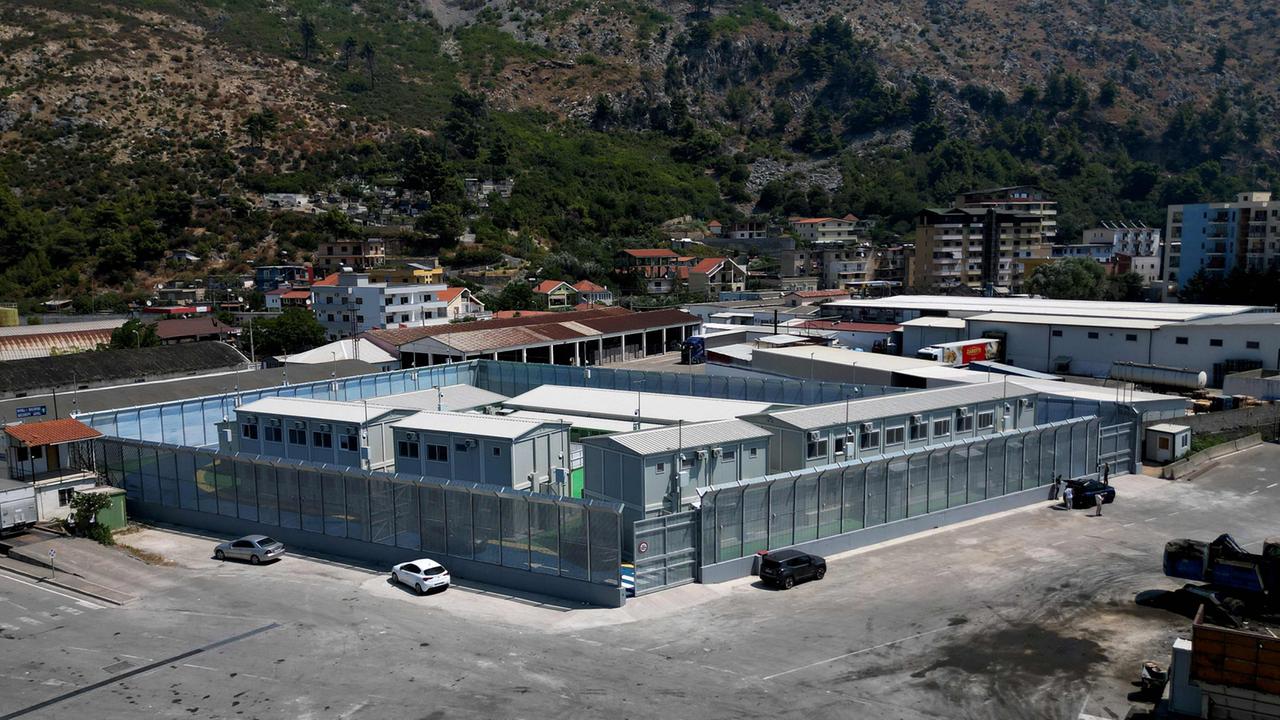Italy wants to accommodate refugees in Albania while their asylum applications are examined. According to the ambassador, the reception centers are now ready. Whether they could serve as a model for the entire EU is controversial.
After several months of delay, the Italian reception centers for migrants in Albania can now start their work. “The two centers are ready and operational as of today,” said Italy's ambassador to Albania, Fabrizio Bucci, during a visit to the facilities. However, it is unclear when the first refugees will arrive there.
People who were taken on board by the Italian authorities on the high seas on their way across the central Mediterranean to Italy are to be brought to both camps. According to the Italian government, tens of thousands of people can be accommodated in the centers every year.
Deportations directly from Albania
Italy plans to first bring migrants to the camp at the Adriatic port of Shengjin for an initial check. They should then come to the main camp in Gjader. The Italian government wants to examine their asylum applications there. Migrants classified as vulnerable, especially women and children, should not be accommodated in the camps but should continue to be brought to Italy.
People should only be able to enter Italy if an application is approved. If an application is rejected, deportations should, according to the plans, take place directly from Albania and thus be possible more quickly. Human rights organizations sharply criticize the facilities.
A solution for the EU?
Italy is one of the countries particularly affected by the refugee movement from Africa to Europe across the Mediterranean. Prime Minister Giorgia Meloni came to office in autumn 2022 with a promise to curb migration to Italy. Almost a year ago, Meloni and her Albanian counterpart Edi Rama agreed to set up the centers – initially for five years and 670 million euros.
Italy and Hungary have proposed extending the principle to the entire EU and setting up so-called “repatriation centers” in which migrants without the right to remain should be sent back to countries outside the EU. EU Commission President Ursula von der Leyen spoke out in favor of the Italian-Albanian agreement last year. Other EU states do not see this model as suitable.
Federal Ministry of the Interior examines legal issues
Federal Interior Minister Nancy Faeser has “not completely ruled out” such a procedure. In the spring, the Federal Ministry of the Interior obtained numerous reports to examine the third country regulation and consulted with experts. They mostly came to the conclusion that such a model would be difficult to implement because of practical and legal issues.
Faeser announced that he would present the findings of these hearings as soon as possible. Your ministry is currently working on a framework that will show “what is possible and what is not.” The “most difficult question of all” is finding a state that is actually prepared to carry out asylum procedures and returns, Faeser said yesterday. Albania has excluded further reception centers on its territory.
According to EU figures, more than 480,000 third-country nationals were asked to leave the EU last year, but only one in five cases returned.




